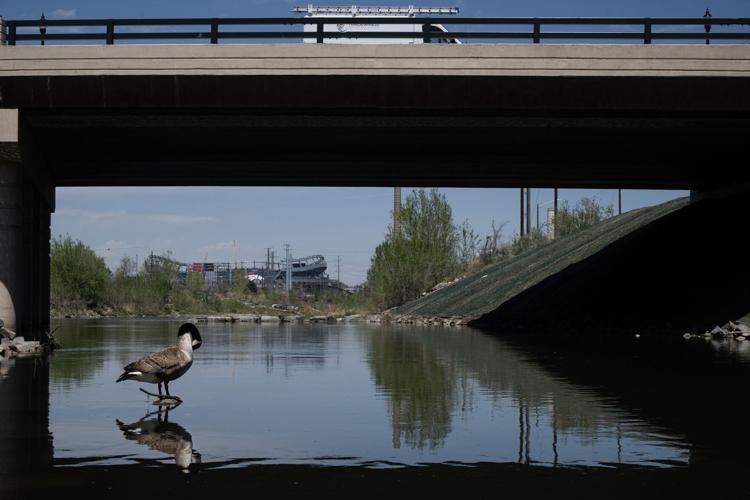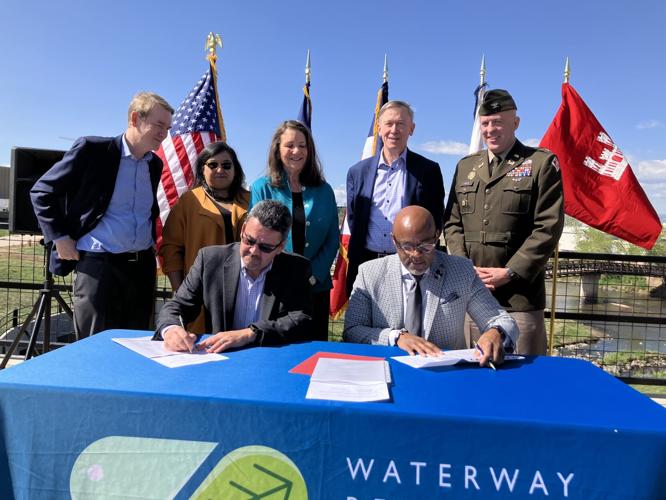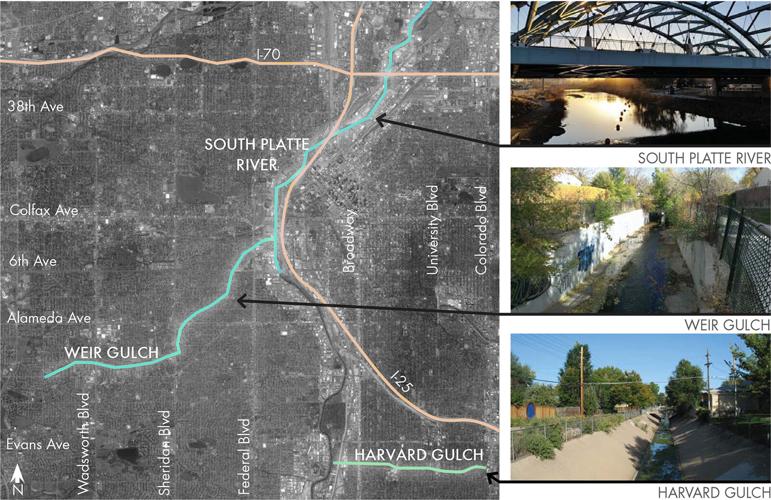Denver signs historic agreement on South Platte River restoration
Projects for a face-lift, habitat restoration and flood control along the South Platte River in Denver just received $350 million in federal funding, according to a news release from the U.S. Army Corps of Engineers.
Representatives from Denver, Adams County, the State of Colorado and the federal government gathered Monday to sign an intergovernmental agreement funding flood risk management, ecosystem restoration and recreation projects on Denver area waterways.
The Waterway Resiliency Program will restore a 6.5-mile stretch of the South Platte River from 6th to 58th Avenues in Denver and Adam Counties, creating more inviting spaces for plants, animals and people, and reducing flood risks along Weir and Harvard Gulches.
“This program is an extraordinary opportunity to restore and conserve our waterways so that residents for generations from now will continue to reap its benefits,” said Mayor Michael B. Hancock in the release. “This historic infrastructure investment will uplift lives, communities and futures across our city.”
“This innovative project delivery method, currently one of four pilots in the country, accelerates delivery through performance-based contracts, leveraged appropriations, and optimized local participation that promotes risk sharing and significant project life-cycle cost savings,” according to the release.
Denver was built along the South Platte River, which has been both a benefit and a bane to the community at various times through the city’s history.
In 1965, a massive tornado-producing thunderstorm settled over the Plum Creek drainage near Larkspur and Palmer Lake early in the afternoon of June 16.
One tornado tore off 30 roofs in Palmer Lake. The storm cell dropped 14 inches of rain in about 3 hours. The flood reached Denver’s urban areas by 8 p.m. The flood is the largest and most expensive event in Denver’s history, costing 21 lives statewide and more than 600 injuries. The flood cost $508 million in damages, nearly $4 billion in today’s dollars.
Other storm cells near Cherry Creek, Greeley, and Sterling and along the river caused major flooding all the way to the state line near Julesburg through June 20 that year.
Previous flood control efforts by the Corp of Engineers, which built Cherry Creek dam and reservoir in 1950, were credited with saving many lives.
After the 1965 flood, the Corps of Engineers went on to build Chatfield and Bear Creek dams and reservoirs to improve flood protection.
But the Corps of Engineers says that flooding is still a risk that needs mitigation, particularly on urban tributaries like Weir and Harvard Gulches.
The engineering report from the Corps of Engineers suggests removing 360 structures from the Weir Gulch floodplain to widen the floodway. Weir Gulch runs northeast from the Barnum Softball Fields near 6th Ave. and Federal Blvd. to its confluence with the Platte River near West 9th Ave.
The Harvard Gulch watershed project, which starts at the Harvard Gulch Park near East Harvard Avene and South Logan Streed includes flood risk management that would provide added protection for 176 structures throughout the community,
Goals of the South Platte River project include:
• Restore riparian and wetland habitat quantity, quality, and connectivity for migratory birds in the Central flyway, as well as native plants and animals.
• Restore aquatic habitat for native species.
• Reduce flood risks to life, safety, property, and infrastructure; and
• Improve public recreation opportunities, connectivity, and accessibility.
“This project presents a unique opportunity for the Omaha District Corps of Engineers to partner with an extremely dedicated sponsor to restore a highly degraded river that would provide a significant boost in nationally significant habitat and habitat connectivity,” said Col. Mark Himes, USACE Omaha District commander. “It will also provide flood risk reduction to hundreds of structures within both the Harvard and Weir Gulch Communities.”
Project sponsors are USACE, Denver, Mile High Flood District, and The Greenway Foundation.
For more information on USACE’s Public-Private Partnership program, visit: www.usace.army.mil.






